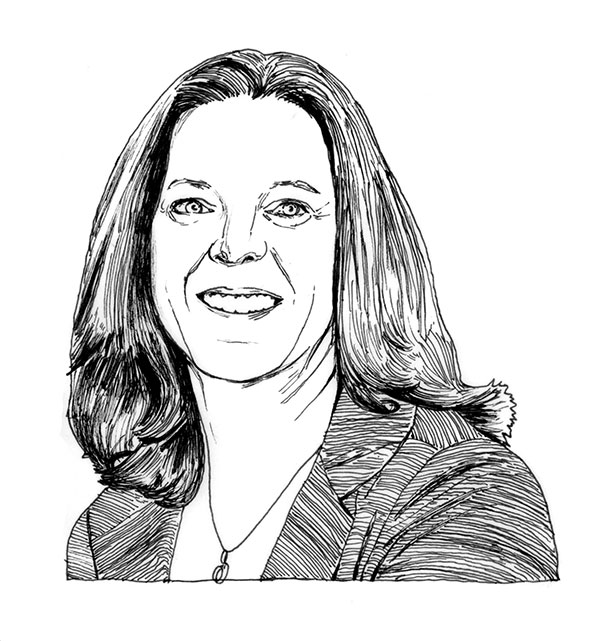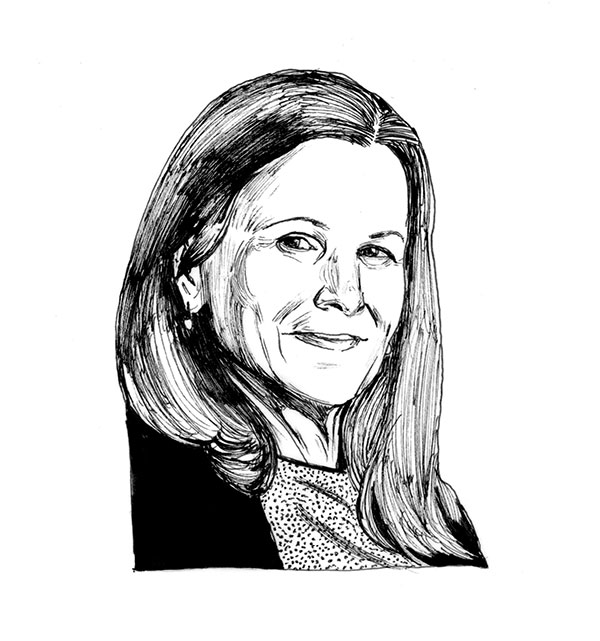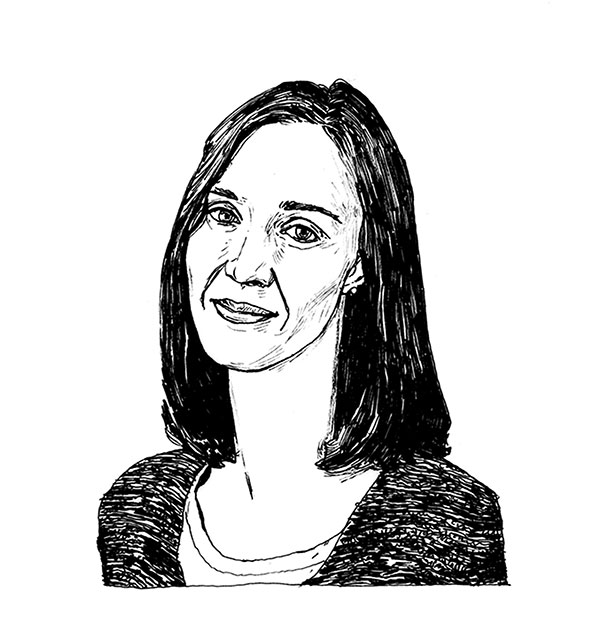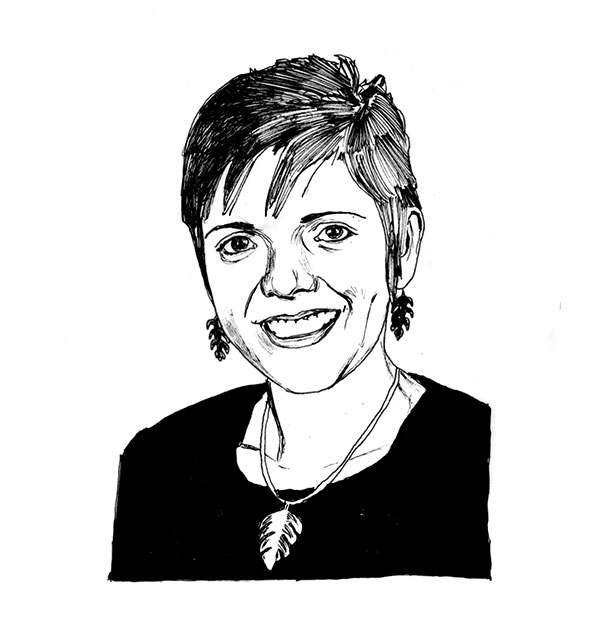At Hollingworth Science Camp, a Deep Dive into Oceanography
Each July, TC’s Hollingworth Science Camp provides 200 students, grades K–4, with an immersive, hands-on science curriculum.
This past summer was even more immersive than usual. The theme was oceanography, and Camp Director Jacquelyn Durán (Ph.D. ’18) and her team of teachers — all TC alumni or current students — led trips to the Maritime Aquarium in Norwalk, the “Unseen Oceans” exhibit at the American Museum of Natural History, and TC’s own Smith Learning Theater, where footage spotlighted trash.

Photograph: Nina Borland
When teachers asked what could be done to decrease ocean pollution, some students created artwork in support of ocean cleanup. Many others decided to ask their local representatives to protect marine habitats.
Campers even designed their own prototypes for retrieving surface-level ocean debris. Using recycled items — plastic nettings from clementine packages, empty water bottles, etc. — the young engineers revised, retested and improved their prototypes in kiddie pools in Zankel Hall.
Per camp tradition, at pickup time each day, teachers held up “Ask me about…” signs to prompt parents to give students a chance to share their new expertise. One mother told Durán the camp was “a turning point” for her son. Previously uninterested in school, he could not stop talking about everything he was learning at camp.
Durán hopes to enhance the camp’s already impressive curriculum by adding more culturally diverse topics and scientist biographies.
As for those great ocean cleanup proposals, Durán waited until after the campers had tested their designs before teaching them about real-life cleanup technology that’s in development. “Why constrain their ideas?” she said. “Kids think so much more broadly than we do.” — Emily Kobel
TC Welcomes the Abby M. O’Neill Fellows
This fall brought the first cohort of Abby M. O’Neill Teaching Fellows to TC’s campus. Created by a $10 million gift from O’Neill — a long-time TC Trustee who died in spring 2017— the Abby M. O’Neill Fellowships are given to outstanding Teachers College students who are committed to teaching in New York City schools. Each Fellow receives $40,000 in tuition assistance. O’Neill sought to make Teachers College affordable to New York City-bound teachers by relieving them of debt and giving them the financial freedom to serve the city’s children.
Brush with the Beach
Hawaii On Her Mind
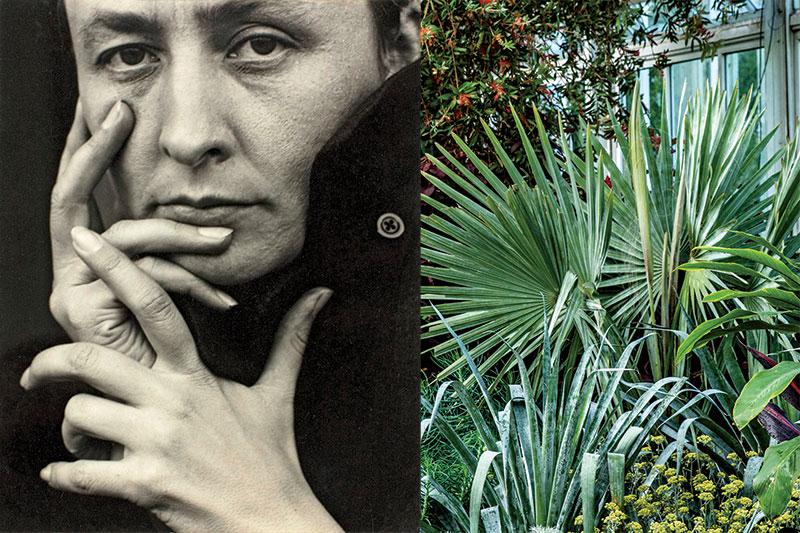
The great modernist painter and late TC alumna Georgia O’Keeffe is known for deriving inspiration from the American West, but she also spent nine weeks in Hawaii during 1939, commissioned by the Hawaiian Pineapple Company. This past fall, in an exhibition titled “Visions of Hawai’i,” the New York Botanical Garden displayed 20 of O’Keeffe’s Hawaii paintings of lava-studded beaches and towering waterfalls.
They’re Hired
Six new faculty members joined TC this past fall:
Prerna G. Arora, Assistant Professor of School Psychology, develops and examines school- and community-based culturally- tailored interventions for immigrant populations.
Paulo Blikstein, Associate Professor of Communication, Media & Learning Technologies Design, examines how new technologies can transform K-12 science, engineering and computation learning.
Nicole L.B. Furlonge is Professor of Practice and Director of TC’s Klingenstein Center for Independent School Leadership.
Jordan Matsudaira, Associate Professor of Economics & Education, served on President Obama’s Council of Economic Advisers as Senior and then Chief Economist.
Robert Siegler is Jacob H. Schiff Foundations Professor of Psychology & Education. He researches how theoretical understanding of mathematical development can improve children’s math learning.
Rosalia ZÁrate, Minority Postdoctoral Fellow, researches higher education policy, with an emphasis on retaining underrepresented students and improving equity in STEM fields.
Depicting the Thing With Feathers
Artolution, Not Persecution
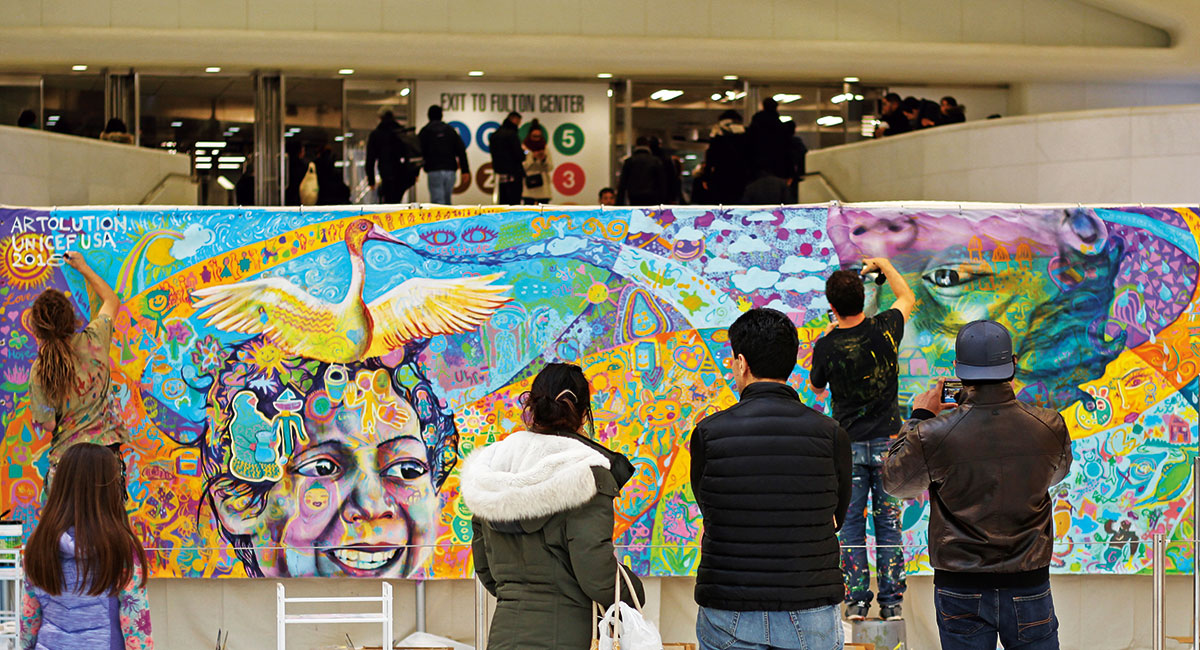
The Rohingya people fled to Bangladesh after persecution by Myanmar’s armed forces. In a mural now at New York City’s Oculus Building, Rohingya refugee children, guided by TC student Max Frieder’s nonprofit, Artolution, express hope for living without fear.
Taking Up the Community College Challenge
Thomas Brock, previously Commissioner of the U.S. Department of Education’s National Center for Education Research, became Director of TC’s Community College Research Center (CCRC) in September. He succeeded Thomas Bailey, now TC’s president. “Community colleges offer millions virtually unfettered access to higher education but are often beset by inadequate funding and low completion rates,” said Brock. “CCRC objectively examines factors that impede their success and generates ideas and evidence for improvement.”
Education Reimagined
A summer institute bridges the rhetoric of diversity and the reality of segregation.
Academic keynote addresses rarely involve actual notes — let alone an acapella Native American prayer song. For speaker Angela Valenzuela, Professor of Educational Leadership & Policy at the University of Texas-Austin College of Education, that difference underscored the takeaway of TC’s third annual Reimagining Education Institute, in early July: that education must embrace a broad diversity of cultures and perspectives.
Reimagining Education is TC’s answer for a nation “caught between the rhetoric of diversity and the reality of segregation,” Institute director Amy Stuart Wells told more than 350 educators from 24 states and six countries. TC faculty and students joined a cast of powerful speakers in raising issues of privilege, cultural literacy and school diversity. Valenzuela, whose keynote was also TC’s sixth annual Edmund Gordon Lecture (Gordon, 97, the famed psychologist, looked on), described how Academia Cuauhtli, the public-private partnership she directs, immerses “historically disadvantaged” fourth graders in a curriculum steeped in Mexican-American and Tejano culture
The children emerge feeling part of “the great American panorama” and of “a curriculum in which they are developing skills that help them to see themselves as college material — just like everyone else.”
— STEVE GIEGERICH
Loud Reports: Headline-Makers from TC
Getting real with second-language teaching; problems with arming teachers;
can citizenship education work in Rwanda?
- Second language (L2) teaching often emphasizes textbook dialogues over real-life interactions, writes Hansun Waring, Associate Professor of Applied Linguistics & TESOL, in last spring’s Classroom Discourse. Waring argues for using teachable “patterns in observable talk and conduct.” She offers a model classroom lesson centered on analyzing a recorded tele-phone exchange, filled with interruptions and incomplete sentences, in which one friend asks another for help with his car. The textbooks incorporating such teaching are “yet to be written,” Waring says, but “the field is wide open” to pedagogical innovation.
- Guns for teachers? Really? No evidence-based guidelines for training and preparedness exist, note Sonali Rajan, Assistant Professor of Health Education, and Charles C. Branas of Columbia’s Mailman School of Public Health in June’s American Journal of Public Health. It’s not clear that armed teachers would help uniformed law enforcement in a crisis. The annual cost would total nearly 30 percent of the federal education budget. The authors’ alternative? Reduce youth access to guns; increase services to detect potential for violence; and promote a nurturing school climate.
- Rwanda is using citizenship education to address its past genocide — but also to reinforce the current state’s unity. Little time is spent on multiculturalism, minority rights and post-genocide human rights violations, notes Garnett Russell, Assistant Professor of International & Comparative Education, in May’s Comparative Education Review. Her data “highlight the need to further contextualize” global models of citizenship education and better understand how they will be interpreted and invoked locally.
IN BRIEF
- Does the Constitution permit the current detention and separation of immigrant families at America’s borders? That question dominated a TC Constitution Day discussion, co-facilitated by Mary Mendenhall, Associate Professor in the Department of International & Transcultural Studies, and Eleanor Acer, Director of the Human Rights First Refugee Protection Program, and sponsored by the Office of the Vice President for Diversity and Community Affairs. Acer suggested that we “do what is necessary to ameliorate the human rights situations that cause people to flee [their home countries].”
- Legendary TC nutrition educator, alumna and Professor Emerita Joan Gussow turned 90 on October 4th. Hailed as mother of the sustainable food movement, Gussow has inspired food gurus from Michael Pollan to TC’s Ellie Krieger (M.S. ’94).
- TC doctoral students Tiana D. Moore (Developmental Psychology) and Shanae Burch (Health Education) are 2018 Robert Wood Johnson Foundation Health Policy Research Scholars. Moore, a graduate fellow at TC’s National Center for Children & Families, investigates how housing and neighborhood conditions affect health and educational outcomes. Burch, a digital and performance storyteller, uses the arts to promote health education and literacy.

